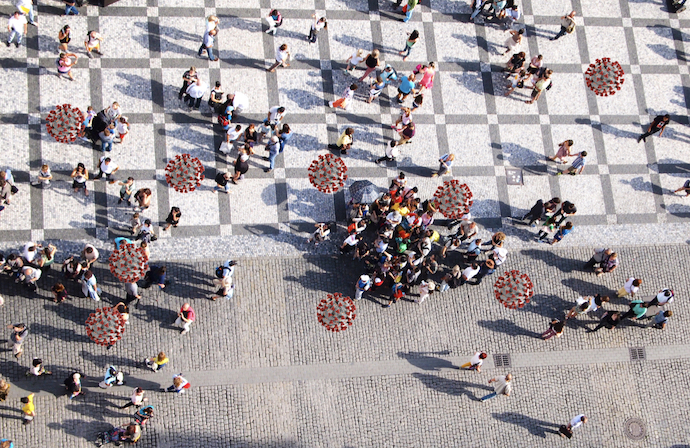In our years of broken ideologies, few, very few principles survive. The ones that do are fairly stable. The core idea of liberalism is one of those. If you behave for your own profit, without harming anybody, everybody is better off. It is actually a nice idea on which most of our societies are founded. We have defined what it means to harm somebody else, so we know the boundaries to respect when acting for our own benefit. And that not only improves ourselves but the community at large —a sweet deal.
But what if even such an idea turns out to be wrong?
Take past sunny weekends in Utrecht and Amsterdam. Or my strolling today, a fairly rainy day, in Utrecht. The city is back from fear and desolation. To walk around is like walking on a Saturday midday: everybody is out, the terraces are full, many people sit at the channels to talk and enjoy the mutual company. It is all good, and COVID19 seems to have disappeared from our awareness.
Yet, we are still in the middle of a pandemic.
Interesting in the lively Utrecht of the previous days is that if you were going out with a 1,5 meters stick, you would realize that most people are actually keeping a reasonable distance from each other. Indeed what I see happens in the open spaces of the cities, where experiments and measurements tell us that contagion is extremely unlikely when keeping the distance.
So what’s the problem? Each of us is acting in our own interest: we are keeping the magic 1,5. So we are together, the town’s economy is churning again, and all is good what ends good, right?
Wrong.
Anybody who understands airborne pathogens and observes what has been going on in Utrecht in the last days knows that contagions will flourish like crazy.
Perhaps the number of people vaccinated will balance all this, perhaps not. But the key observation remains: that many people in the street are not good for anybody. Good individual behavior is screwing us all, and consequently, is screwing each of us. How could this be happening?
The technical reason here is that the thumb rule of 1,5 meters of separation has been calculated measuring aerosol spread between two persons. What we have done is to extrapolate that simple measurement to a real situation, the one in which not only two persons are exhaling, but hundreds. The wind makes it unlikely that pathogens airborne from one person further than 1,5 meters will reach you. But when there is not only one person at this distance, but several, or actually hundreds of persons at many distances, the possibility of being infected tends to the certainty.
And so, the right behavior of many is the wrong behavior of the mass. Could this —nonlinear in technical parlance— effect undermine our good old trusted liberal principle? I am not sure, so I will leave the possibility here.
Floating in the air.





